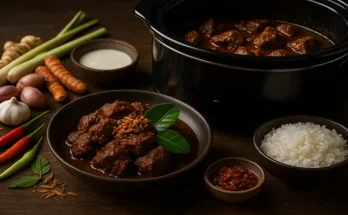The art of pastry relies on a delicate balance of science and creativity. While traditional techniques have long dominated the kitchen, the integration of hydrocolloids—long-chain polymers that thicken and gel when dispersed in water—has given modern pastry chefs unprecedented control over texture, stability, and shelf life. These “water-loving” compounds are the secret behind stable fillings, flawless glazes, and ethereal foams, providing a powerful toolkit for creating a new generation of delicious and visually stunning desserts.
What Are Hydrocolloids?
At their core, hydrocolloids are a diverse group of natural substances—from plant-based gums and seaweeds to microbial products—that have a remarkable ability to bind water molecules. By doing so, they can create viscous liquids (thickeners) or rigid, three-dimensional networks (gelling agents). In the context of pastries, this allows for the precise manipulation of a dish’s rheology, from preventing a sauce from separating to ensuring a filling remains stable during baking or freezing.
Creating Stable Emulsions: The Case of Xanthan Gum
An emulsion is a mixture of two immiscible liquids, such as oil and water. In pastry, this is common in buttercreams, ganaches, and certain sauces. The challenge is keeping these two phases from separating over time, a process known as “breaking” or “curdling.” While egg yolks and traditional emulsifiers are effective, hydrocolloids like xanthan gum offer a highly stable and often vegan alternative.
- How Xanthan Gum Works: Xanthan gum is a polysaccharide produced by the fermentation of a sugar with a specific bacterium. Even at very low concentrations (often less than 1%), it creates a highly viscous solution. When added to a recipe, xanthan gum coats the oil droplets, preventing them from coalescing and separating from the water phase. This creates a stable, homogenous mixture that can withstand changes in temperature and handling. In a gluten-free pastry, xanthan gum is especially vital as it also helps to mimic gluten’s binding and elastic properties.
Perfecting Gels: From Firm Cubes to Fluid Gels
Gels add a delightful textural contrast to pastries, from fruit jellies and fillings to decorative elements. While gelatin has long been the standard, it has a low melting point and is not suitable for vegan or vegetarian applications. Hydrocolloids like agar-agar and gellan gum provide a new world of possibilities.
- Agar-Agar: Derived from seaweed, agar-agar is a potent gelling agent that creates a firm, brittle, and heat-stable gel. Unlike gelatin, which melts at body temperature, agar-agar gels set at room temperature and do not melt until heated to a much higher temperature (around 175°F / 80°C). This makes it ideal for bake-stable fillings and glazes that won’t melt away. To use it, agar-agar must be brought to a boil in a liquid and simmered for a few minutes to fully hydrate before it sets upon cooling.
- Gellan Gum: Another microbial polysaccharide, gellan gum is celebrated for its versatility and clean flavor release. It comes in two main forms: high-acyl and low-acyl. High-acyl gellan gum creates a soft, elastic gel with a creamy mouthfeel, making it a great choice for fillings and panna cottas. Low-acyl gellan gum, on the other hand, produces a firm, brittle gel that is perfect for firm cubes or “caviar” pearls. Gellan gum also has excellent heat resistance, allowing it to be used in baked fillings without losing its structure.
By understanding the unique properties of hydrocolloids and how they interact with other ingredients, pastry chefs can unlock new creative avenues. Whether it’s creating a perfectly stable ganache for a tart or a fluid gel to serve with a cake, these scientific tools provide the precision needed to elevate a simple dessert into a masterful creation.
A YouTube video from a professional baker demonstrates how to use Gellan Gum to create a bake-stable raspberry filling.19 Gelatine for baking fillings – Goma Gellan.





